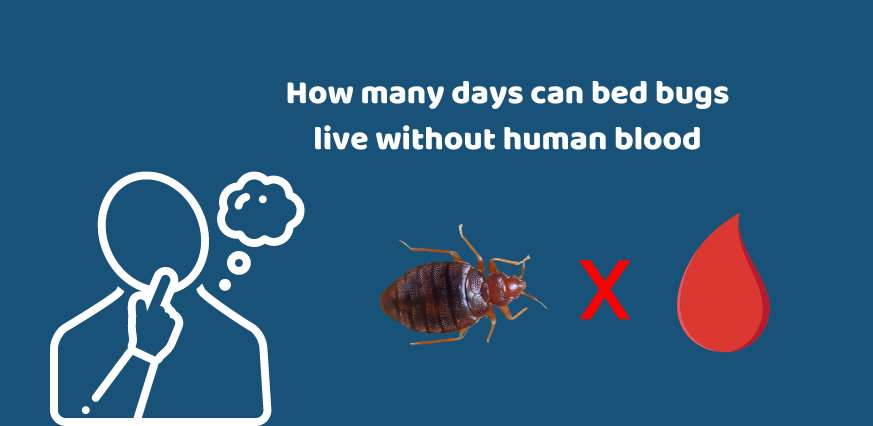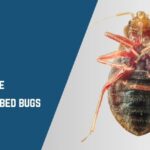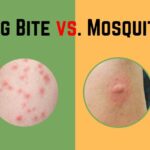
Blood is the only food that distinguishes bed bugs, those microscopic, nocturnal creatures that give homes the chills. These wingless, reddish-brown, 1mm to 7mm creatures can go months without feeding on blood. This is an in-depth look at their eating routines and gastronomic tastes.
What Do Bed Bugs Eat?
Single-Minded Bloodlust
Blood is a particularly specialized food that bed bugs only eat. They penetrate the skin of warm-blooded creatures, mostly humans, with their straw-like mouthparts, or proboscis, to draw blood. Not only is this blood meal necessary for their survival, but it is also essential for their growth and procreation.
Preference for Human Blood
In contrast to mosquitoes and ticks, bed bugs thrive on opportunities. Though they do prefer human blood, if humans are not accessible, they will not refuse a meal from any other warm-blooded hosts. Humans are drawn to one another because we are warm and release carbon dioxide.
Cannibalism
According to some research, bed bugs may turn to cannibalizing sicker or dead people when they run out of food. This behavior is probably a last-ditch attempt at survival, albeit it is not well understood.
Pets
Alternative blood sources are of no concern to bed bugs. Unintentional targets can include pets such as dogs, cats, rats, and birds. When bed bugs get to the skin, they burrow through feathers or pet fur.
Livestock
Bed bug populations that eat chickens and other animals may be present in poultry farms. Bed bugs are opportunistic and can be found in agricultural settings in addition to homes.
Bats
A distinct species of bed insect called the bat bug exclusively hunts flying mammals in bat-inhabited environments. Bed bugs demonstrate their flexibility by preying on a variety of warm-blooded hosts.
What is their feeding pattern like?
Frequency of Feeding
Temperature affects how often bed bugs feed. Adult bed bugs usually feed once a week in warmer climates. To molt and mature into adults, nymphs require more frequent feedings during their growth phases.
Time Spent Eating
During a single feeding session, which lasts between ten and fifteen minutes, the bed bug engorges itself with blood, multiplying in size several times. As they mature, nymphs, or young bed bugs, need to be fed many times a day.
Do Bed Bugs Feed Every Night?
Being mostly nocturnal animals, bed bugs frequently link the night with their eating schedule. When it’s darkest and their hosts are usually asleep, that’s when they love to feed. It’s crucial to remember that bed bugs don’t always feed at night. Their developmental stage, temperature, and the availability of hosts are some of the variables that affect how frequently they eat.
While nymphs, or immature bed bugs, require more regular feedings to grow and molt, adult bed bugs can go for weeks at a time without feeding on blood. Bed bugs may feed once a week or more in warmer climates, however this can vary. Bed bugs can modify their eating habits in response to the absence of a host, and their hunger may cause them to search for a blood meal during the day as well.
How many days can bed bugs live without human blood?

Adult bed bugs can go from several weeks to several months without a blood meal at ideal temperatures (around room temperature). Depending on variables like humidity and temperature, they may survive for up to 400 days without eating, according to some estimates. It’s crucial to remember that bed bugs are opportunistic feeders, meaning that if a suitable host is present, they will look for a blood meal.
Nymphs, however, need to eat more frequently to grow and develop. Without a blood meal, they might not make it more than a few weeks. The fact that bed bugs may survive for long periods without eating adds to the difficulty of getting rid of infestations since they can hide and wait for a chance to feed.
What do bed bugs eat other than blood?
Blood is the only nutrient that bed bugs can use to sustain their survival, growth, and reproduction. They penetrate the skin of warm-blooded hosts (mostly humans) using their particular mouthparts, called proboscis, to draw blood.
Although their major and preferred food source is blood, there is some sparse evidence that suggests bed bugs may resort to cannibalism in situations of extreme famine. Bed bugs have been known to prey on weaker or dying members of their species under desperate circumstances. Nevertheless, little is known about this behavior and it is not well recorded.
In conclusion, even though their primary food supply is blood, bed bugs will occasionally turn to cannibalism in times of scarcity. This is regarded as a severe reaction to starving conditions and is not a regular element of their feeding habits.
You may also like:
FAQs
What do bed bugs eat?
Do bed bugs have a preference for human blood?
Do bed bugs engage in cannibalism?
What are alternative blood sources for bed bugs?
Do bed bugs prey on bats?
How often do bed bugs feed?
How much time do bed bugs spend eating?
What is the conclusion of understanding bed bugs' eating habits?
Conclusion
This serves as a last call to caution as we wrap up our investigation into the world of bed bugs in the kitchen. With the right information about these elusive pests’ preferences, activities, and adaptability, people can win the war against them.
Proactive measures, comprehensive examinations, and expert assistance turn into the preferred tools in this continuous battle for pest-free living environments.


